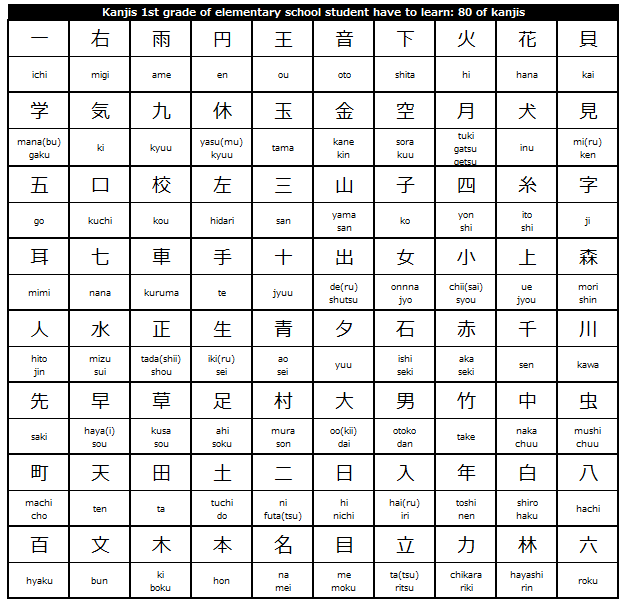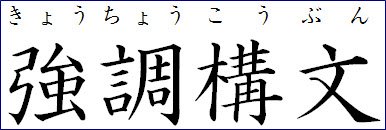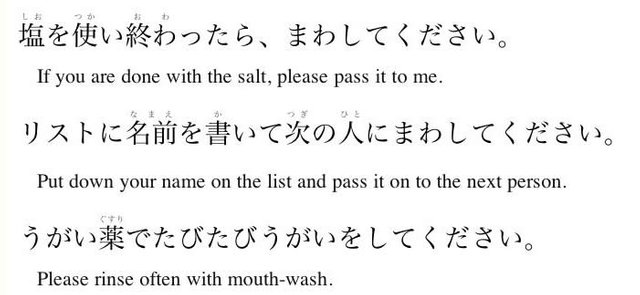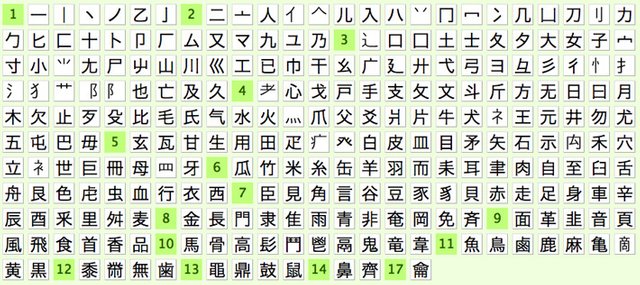So You Want To Learn Japanese Part 3: Kanji
So in my Japanese part 1 and 2 articles, we went a little bit over kanji, but im using this article to go more in depth about kanji and its place in Japanese. First of all let me say, kanji is, to me, the hardest thing about Japanese. It is very hard to just pickup kanji without sitting down and writing them over an over again.

If you don’t know what kanji are, they are the Japanese characters that many times share the same characters with the Chinese alphabet, mostly because the early Japanese language borrowed from China. There are roughly 2000 common kanji that almost all highschool level students in Japan should know, but over 60,000 in total, the majority of which are used for very specific terms or specialized works. So in reality learning the 2000 is really what is required to be regarded as fluent in writing the language.
2000 might not seem too bad, but the problem comes because many of them are attached with each other to create various different words. So while you may only need to learn 2000 characters, there may be 20,000 combinations that you need to know as well, that includes how to read them if you want to be able to read aloud.
Lets use an example. 日means day, or is pronounced hi本means book and is pronounced hon. However if we put them together, 日本 means nihon which is Japan. That alone can be confusing, but becomes even more confusing when you realize that they can also have different readings depending on how they are put together. For example二is two and pronounced ni if alone人is person and pronounced hito if alone, but if you put them together二人means two people but is pronounced futari, a word that unless you know the exact reading, you won’t be able to pronounce. This just shows how complicated things can be.

Kanji, or Japanese characters, differ from Chinese characters in one pretty big way, which is that the Japanese still use an alphabet with many of their characters, while Chinese uses characters that represent an entire word. I talked about the katakana and hiragana in my other articles more in depth, but the basics is they are phonetic alphabets that can be used as well as kanji, however the use of kanji helps give context and easy identification for a word in a sentence.
Because Japanese words are not spaced when you read them, kanji can be very helpful in figuring out when a word ends and where it begins. Without which, you are often left playing madgab, where words are stuck together. For example without kanji reading a sentence in Japanese would be like reading this sentence in English. Thequickbrownfoxjumpsoverthefence. Trying to read that sentence and break the words apart for a non native English speaker is very tricky.

The hardest part about kanji though and the main reason why I hate it, is many kanji look very similar and you often forget how to read them or how to write them if asked. In fact this phenomenon actually happens to the Japanese as well, especially with computers these days where they can type in the hiragana and have it automatically converted.
The need to remember how to write it isn’t as important as how to read it. The two are similar, but reading it is like seeing a picture of a rhino and knowing it’s a rhino, while writing it is like being asked to draw a rhino off the top of your head. You are more than likely to miss a detail or two.

The reason they look very similar is because one kanji will often be made of up many smaller parts called radicals, which some teachers like to teach, but mine never did. There is a radical chart above if you are interested. Over all Kanji is a difficult thing to learn and if you are going to do it, much of your time is going to be spend just looking and writing over and over again, which for me is annoying.
Wow, it had been a while since the last posting I have read of yours Thanks for adding up to what you had already done, it is appreciated. What a tough language to learn to read!
Thanks for sharing your knowledge about it and good luck with its learning. All for one and one for all! Namaste :)
I havent been posting as much unfortunately because I graduated school and have been applying for jobs mostly. Im trying to push myself to post more frequently though.
Good luck on your job search and wish you to find a thriving position in a healthy job. Great to have you back with us. Namaste :)
Heisig
Remembering the Kanji
Add Anki with a nice deck to it.
Learn.
This post has been ranked within the top 25 most undervalued posts in the second half of Jan 26. We estimate that this post is undervalued by $10.45 as compared to a scenario in which every voter had an equal say.
See the full rankings and details in The Daily Tribune: Jan 26 - Part II. You can also read about some of our methodology, data analysis and technical details in our initial post.
If you are the author and would prefer not to receive these comments, simply reply "Stop" to this comment.